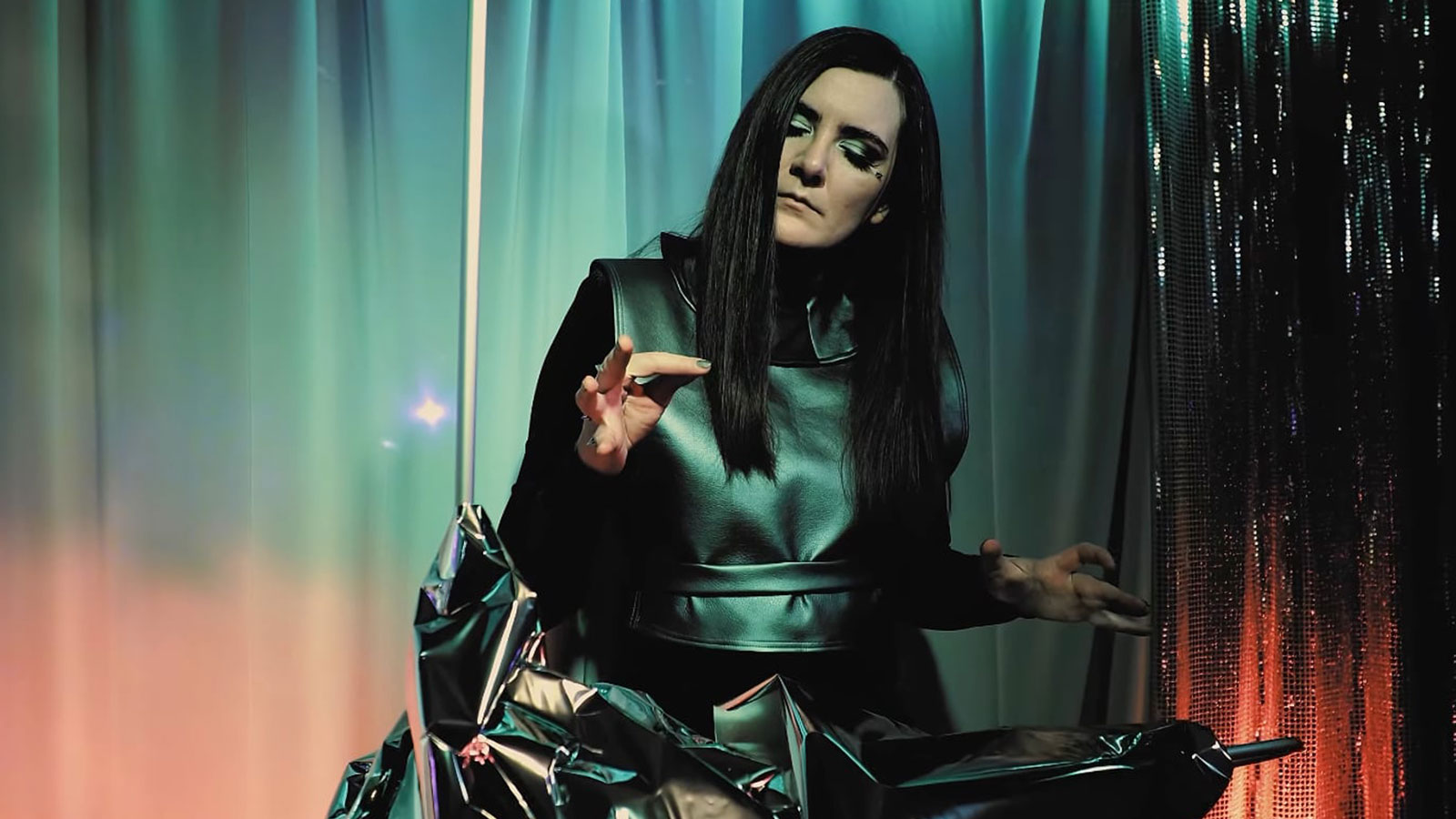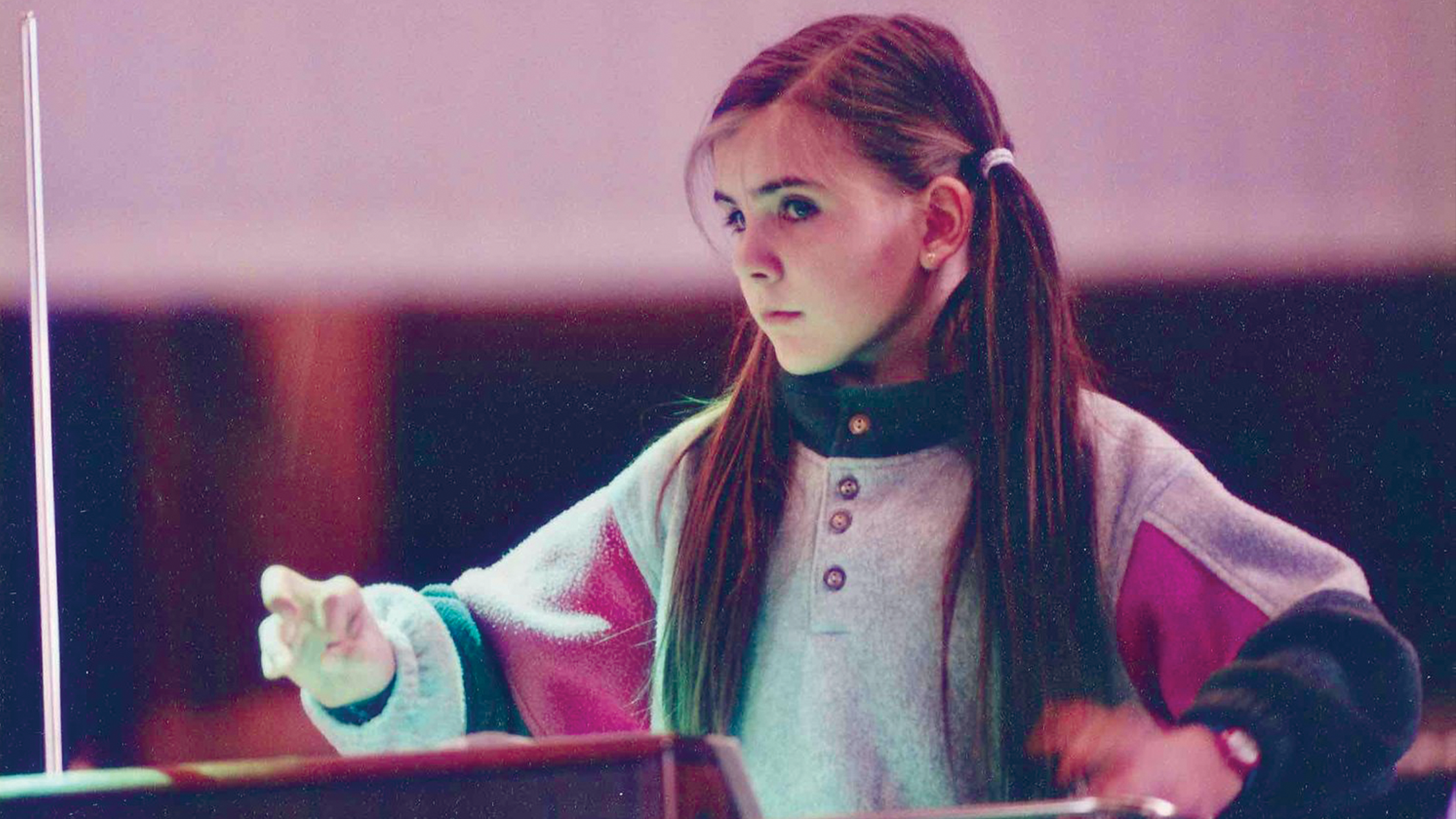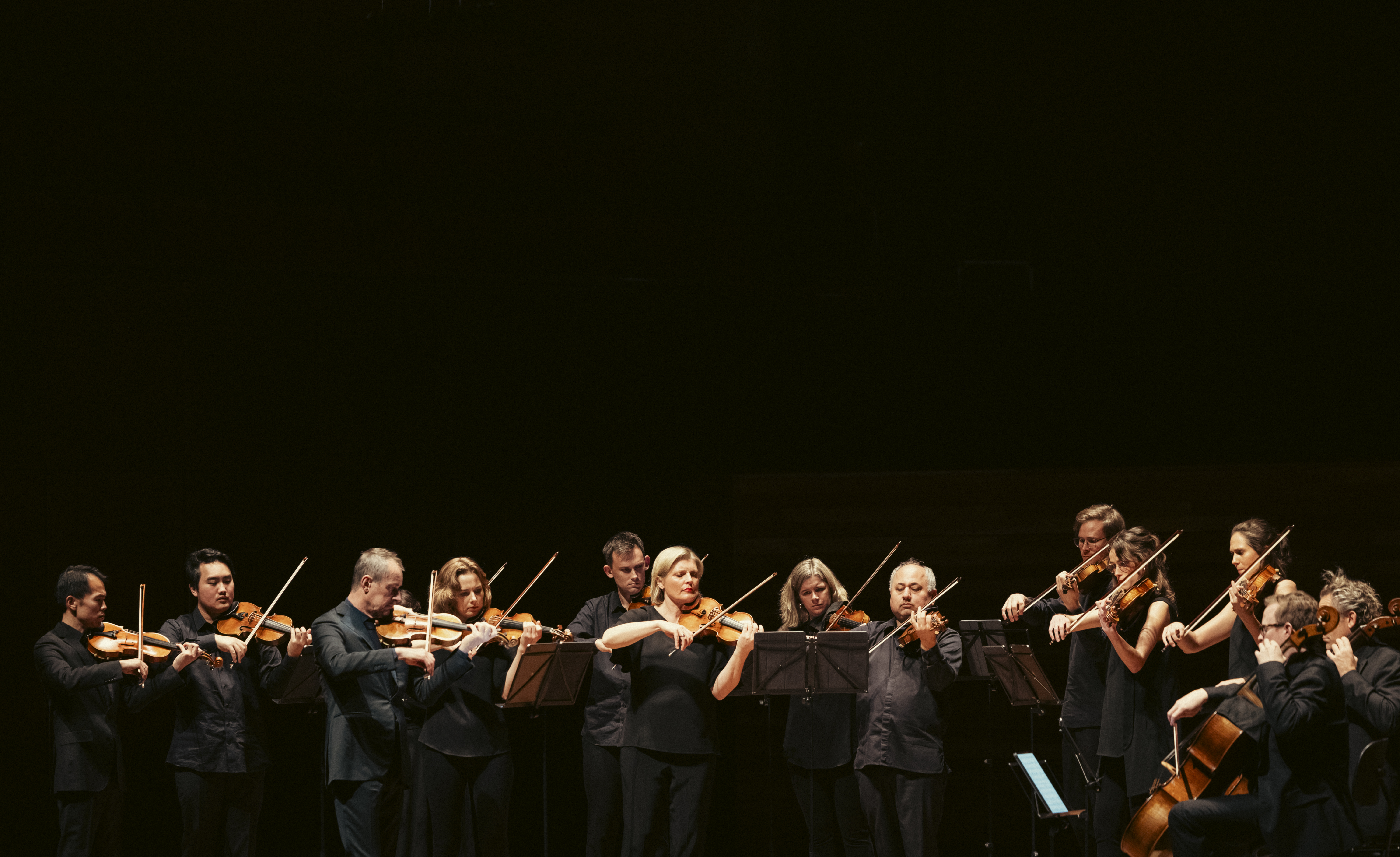
The theremin, the first electronic musical instrument ever invented, is a funny thing. Most people probably don’t know exactly what it looks like but would know, vaguely, the movements one needs to make in order to play it. They probably have an idea of how it sounds – descriptors like “spooky” or “weird” might come up – but likely wouldn’t realise how common theremin use has actually been throughout pop history.
It’s a curio, yes – known as the instrument used on the Midsomer Murders theme tune and in the score for The Day The Earth Stood Still – but it can also be used to convey ecstatic enlightenment in a folk song such as Sufjan Stevens’ 2004 track In the Devil’s Territory, or punky disaffection as on The National Anthem, a highlight from Radiohead’s 2000 masterpiece Kid A. Elsewhere, it’s been used by everyone from The Flaming Lips to iconic Canadian power-pop band The New Pornographers to the Brazilian electroclash heroes CSS, who used a theremin intro to kick off their enduring banger “Let’s Make Love and Listen to Death From Above”.
In other words, the theremin has become an essential part of popular culture in the 100-plus years since its invention. Mass culture may view it as a novelty but in the hands of some, the theremin is filled with potential – even more, perhaps, than something as 'am-dram' as, say, the guitar or the piano. Take, for example, the work of German theremin player Carolina Eyck. The 37-year-old, who began as a child prodigy and has radically altered the way many view theremin playing, has worked doggedly to pull the instrument out of the realm of novelty and into the zone of contemporary classical music.
Her 2022 album, Thetis 2086, is a richly textured, lucent marvel of experimental composition that has a surprising amount in common with the wide-ranging textures of electronic musicians such as Aphex Twin, Suzanne Ciani and ML Buch, while her performances can glide between classical majesty, contemporary brilliance and off-kilter quirkiness.
She joins the Australian Chamber Orchestra for an eclectic program directed by Richard Tognetti. It includes classics such as Johann Sebastian Bach’s Orchestral Suite No.3 in D major, the world premiere of a new composition from Holly Harrison, selections of Camille Saint-Saëns’ The Carnival of the Animals, and popular theremin favourites such as Jim Parker’s themes to Midsomer Murders as well as Star Trek, and Ennio Morricone’s The Good, The Bad and The Ugly.
For Eyck, the pieces she is playing form her potted history of the theremin and oscillate between personal favourites and well-known classics. “It’s sort of drawing a line through the history of famous theremin repertoire,” she says.
Eyck’s range speaks to the looseness with which he views the instrument she’s dedicated her life to. “I think 10 years ago I was on that mission, to make people accept the theremin as something with as much artistic value as the piano,” she says over Zoom from her home in Germany. “I thought ‘let’s make this a proper classical instrument’. But I’ve come away from that – I don’t try to be on a mission anymore, I just try to do music that I enjoy.
“On the one hand, it’s great that it’s a novelty, that it’s a niche – for me and my business, but also for the world; it means that the theremin can still be ‘magic’. On the other hand, with that comes the questions, and it’s always the same questions [about how it works]. So what I try to do is just play what I love with all my heart, and then when I do have to explain, especially onstage, I make it fun and do a little show to explain how it works. I use that as a way to connect to the audience, and that’s always very nice, in the classical context, to go onstage and invite the audience into what’s about to happen.”
The theremin has become an essential part of popular culture in the 100-plus years since its invention.
The theremin was invented in 1920 by Leon Theremin, a Soviet physicist who was creating and experimenting with motion detectors. After accidentally stumbling into the invention – simply by realising that the output of the circuitry he was working on was affected by his body’s proximity to it – he quickly realised its musical potential, and began performing with the instrument throughout Europe and, later, the United States.
A New York Times article from October 1927, about Theremin’s demonstration of what he then called “ether music” – an appropriately unnerving name for such a sound – described the instrument’s “extraordinary beauty and fullness of tone”, reporter Waldemar Kaempffert’s neutrality dampened some by his clear astonishment at what he was seeing.
Speaking to the audience at that New York theremin demonstration, Theremin gave an amazingly hopeful speech about his instrument’s potential: “My apparatus frees the composer from the despotism of the twelve-note tempered piano scale, to which even violinists must adapt themselves. The composer can now construct a scale of the intervals desired. He can have intervals of thirteenths, if he wants them. In fact any gradation detectable by the human ear can be produced.”
He said it also introduced an entirely new range of tonal colors. “Hitherto the composer has had only about twenty tone colors, represented by as many different types of orchestral instruments. I give him literally thousands of tone colors … with nothing but gestures, [theremin players] will give us concerts that will reveal new beauties in tones and their combinations. Apart from these possibilities, ether wave music is created with a simplicity and a directness matched only by singing. There is no keyboard to obtrude itself, no catgut, no bow, no pedal, nothing but simple expressive gestures of the hands.”
“The great thing about the theremin is that, since it’s niche, and it’s not so far developed... you can sort of create your own universe.”Carolina Eyck, theremin virtuoso
It was a statement of remarkable ambition – one which Theremin and his instrument could not, exactly, meet. While many were taken with the theremin, it only became commercially available in 1929, as many were suffering financially from that year’s stock market crash. Even so, the instrument was adopted by some performers and became a point of interest for audiences. But by 1938, Theremin had left the United States, abandoning his wife, ballet dancer Lavinia Williams. He moved back to the Soviet Union due to financial issues, although he did not reveal his reason at the time. In the meantime, Theremin’s onetime lover, Clara Rockmore, continued to boost the instrument’s popularity in the United States, performing with orchestras and eventually becoming known as the greatest theremin player of all time.
Although the theremin eventually fell out of favour – easier to understand, more traditionally oriented electronic musical instruments were invented throughout the ’40s, ’50s and ’60s – it remained beloved among its devotees. In 2015, novelist Sean Michaels wrote in The Guardian about his years-long love affair with the instrument, an “impossible voice” that he described as having an “overlooked capacity for beauty”.
“Most musical instruments require their players to strum, push or blow into something. They require that sticks strike skins or horsehair strokes strings,” he wrote. “Only the theremin seems to rely on nothing more than its player’s presence or absence. Only the theremin appears to run on hope.”
This sense of magic seems to be something many of the theremin’s players appreciate: Dorit Chrysler, head of the New York Theremin Society, described one of the joys of playing as the “mystery of not touching anything, which naturally feeds into the imagination. So it really just sparks your mind”.
“I had my first performance at eight years old – but since nobody knew what I was doing, it was never like ‘Oh, why does it sound strange?”Carolina Eyck, theremin virtuoso
For Eyck, the “magic” of the theremin has never been as apparent as it is to other people. Born near Berlin, her parents were both engaged in musical practice, and she grew up around a lot of electronic music. “My dad and his colleague had a band, and they had all these synthesisers, and played meditative electronic music in churches, so electronic music was always around in our family, and my mum would do the light shows for them,” she recalls. “One day, I think they were getting a new synthesiser, and this person selling them said, ‘Did you see the theremin? Maybe that could be something for your band.’ And so they bought it.”
Eyck was seven at the time, and she had already begun taking lessons on the piano and violin. When her parents realised that the theremin wasn’t as easy an instrument to pick up as they had initially thought, they passed the instrument along to Eyck. “They realised you didn’t just ‘get it’ – you need to practise,” she says. “And so, since I was there, and I was young, and standing around, it then became my instrument.”
Shortly after she began to play the theremin – “there’s video recordings of me trying the first notes, and they were terrible” – Eyck and her parents went to a theremin concert featuring the Russian player Lydia Kavina, who was a distant relative of Leon Theremin and learned her craft from him. Eyck’s parents asked Kavina to teach her how to play the instrument and so, every so often, Kavina would fly to Germany from Russia to give Eyck some lessons.
“I would see her about twice a year, whenever she was around – there was no Zoom back then,” says Eyck. “In between the times that she would see me, my dad would practise with me on the piano. So I had violin lessons, piano lessons, so I sort of picked up things from the other instruments, and then for the technique, when Lydia was around she taught me. In between, I would just try to practise loads.”
Playing something that nobody else did gave Eyck a unique kind of confidence. “As a child, you just take things as they are – I didn’t really compare it to anything. For me, the theremin was just its own thing, and I knew that when I was onstage, nobody knew what the theremin was, they hadn’t heard about the instrument yet,” she says.
“When I was younger, that gave me confidence in sort of being like a musician onstage. My father would put me onstage at a very young age – I had my first performance at eight years old – but since nobody knew what I was doing, the question was rarely ‘Why does it sound strange?’ It was always more fascinating [for people], there was never much judgement up there. On the other hand, when somebody tells me today ‘Oh this is so fascinating, what you’re doing’, I think ‘I hope I moved beyond the fascination – into something that might stay with them’.”

Once Eyck started playing the theremin, other instruments lost a little bit of their shine – perhaps naturally, given how unique the theremin is. “I don’t play anymore, but I studied viola later and I do like to have something in my hands as well and be like ‘Oh, there’s bow pressure’. With the piano as well – I can play several notes at the same time, and I can create a beautiful chord. I can’t do that with the theremin,” she says. “But on the other hand, I always knew that the theremin would be my path because the feeling I had onstage was a different one. I knew I wouldn’t be judged as much, and so it gave me a freedom, in a way, that the other instruments wouldn’t be able to give me.”
The theremin unlocked Eyck’s creativity in a new way (“you can add effects to it, or you can draw things in space”) and, most notably, it allowed her to radically reinterpret the instrument as she saw fit. When she was 16, Eyck developed her own method of playing the theremin. She later detailed it in a book, The Art of Playing the Theremin, and is still exploring and developing her practice to this day.
“I guess that’s also creative,” she says, somewhat bashfully. “The great thing about the theremin is that, since it’s niche, and it’s not so far developed, everything that’s around it, you can sort of create your own universe. I teach, I do recordings, you can even build an instrument on your own. So there’s a whole universe you can create.”
I ask whether Eyck felt pressure being a child theremin prodigy, to which she replies, simply, “I don’t know”. “Back then, it just felt like hard work, and also it kind of shaped my ego, in a way, because it was always very connected to the instrument and to the ability I have with the instrument,” she says. “At some point, I questioned myself – what am I without my ability to play the instrument, if my self-worth is so connected to it, and this is something I’m truly confident about… What about other things in life? Who am I without that? But with the theremin, there was not so much pressure, because I put a lot of work into mastering the instrument.”
“Only the theremin seems to rely on nothing more than its player’s presence or absence. Only the theremin appears to run on hope.”
The relative youth of the theremin is exciting to Eyck, given that the community of players is always expanding the instrument’s capabilities. “A couple of years ago, Eric Wallin built his own instrument, and it’s a mostly digital instrument, and all of a sudden you can shape the timbre of the sound as well as the volume, and it’s like a whole new dimension added to the sound,” she says. “I need to figure out how to play that, because it’s not just soft and loud, but also like shaping the sound.”
“Soft and loud” is, it seems, an oversimplification of how the instrument works, especially because, Eyck says, so much of your playing is reliant on feeling good in the moment. “The only thing you feel yourself is your body – if that’s the first thing you feel, you also feel if you’re nervous, or if you had bad sleep, so it’s a priority before you start to play to just make sure you’re feeling sort of grounded, and that you get to a state where you feel comfortable,” she says.
In recent years, the theremin has found a new audience on social media and the internet, with artists such as Mezerg, an electronic dance musician, achieving millions of views on YouTube thanks to a series of vigorous, expressive videos in which he uses the theremin to make club tracks. TikToker Caroline Scruggs, an American theremin player, has become famous on the platform thanks to her videos in which she explains how the instrument works and then covers well-known songs, and modern indie musicians such as Kevin Morby are using the instrument on classic-sounding rock songs, adding new texture and variation to the potential usage of the instrument.
Eyck herself is part of this phenomenon. She has over 180,000 subscribers on YouTube, more than 2.9 million likes on TikTok and some of her videos have clocked more than 10 million views.
“I think social media is what makes the instrument popular these days,” says Eyck. “Back in the days when YouTube just started, I created my channel, and for me, the challenge was to produce videos so that we could get a good balance between videos of cats playing the theremin and real people playing the theremin,” she says.
“Today, with TikTok and so on, it’s just good – it’s great that people can get educated.”
By Shaad D’Souza.
Shaad D’Souza is a freelance writer, editor and creative consultant currently based in London. He is The Saturday Paper’s music critic and writes regularly for Pitchfork, New York/Vulture, The Sydney Morning Herald and more, and was previously on staff at The Guardian, VICE and The FADER. He has also worked at Spotify and triple j, and served on the board of directors for youth music non-profit The Push Inc and the industry advisory board for Arts Centre Melbourne’s Australian Music Vault. Shaad was the Australian and New Zealand editor of VICE’s music vertical Noisey, a contributing editor at The FADER, and has appeared on The New York Times’ Popcast, The Guardian’s Full Story podcast, Schwartz Media’s The Culture, triple j’s Hack, and ABC Radio National.
Click here to book tickets for Theremin & Beyond, starring Carolina Eyck and directed by Richard Tognetti, touring to Wollongong, Sydney, Brisbane, Melbourne & Canberra, 8–20 May.
